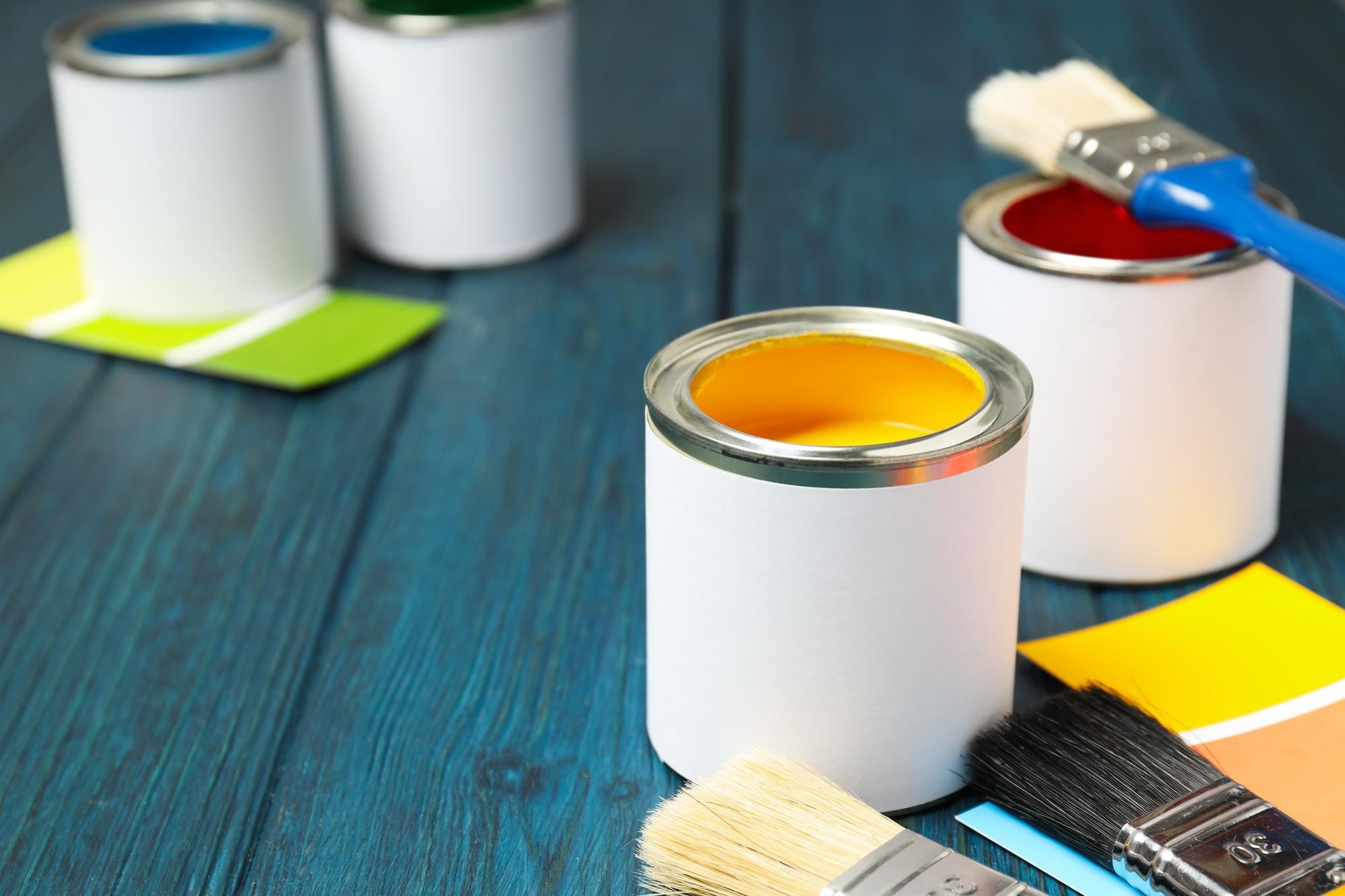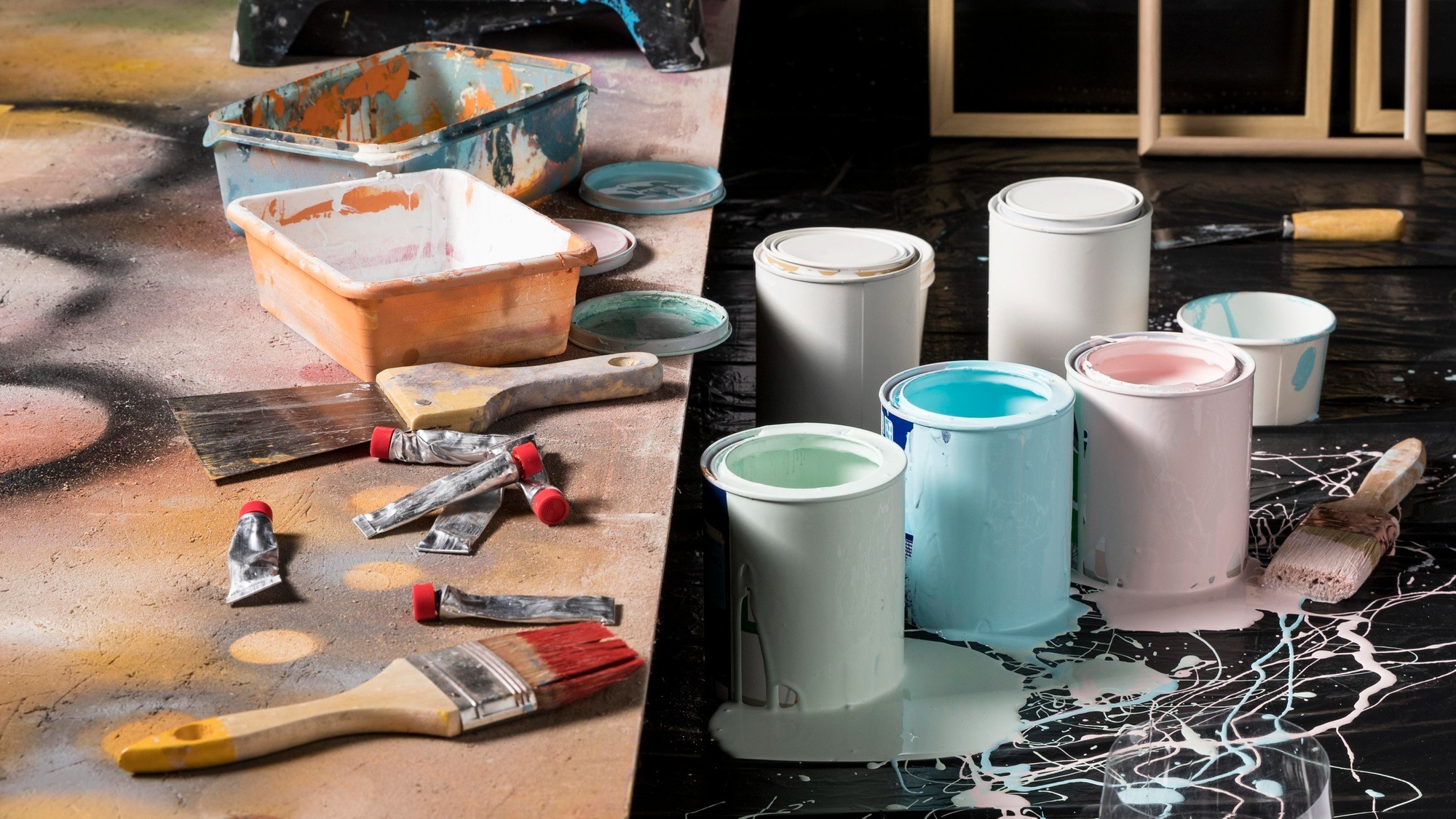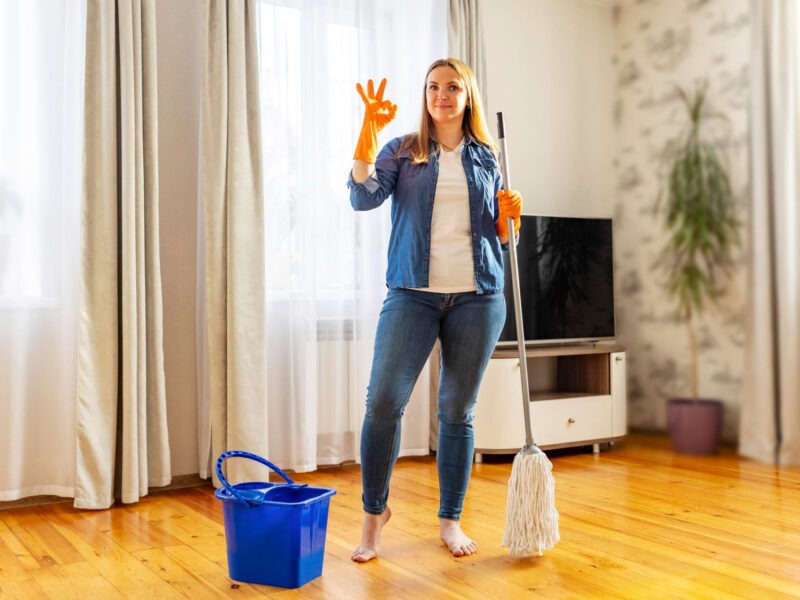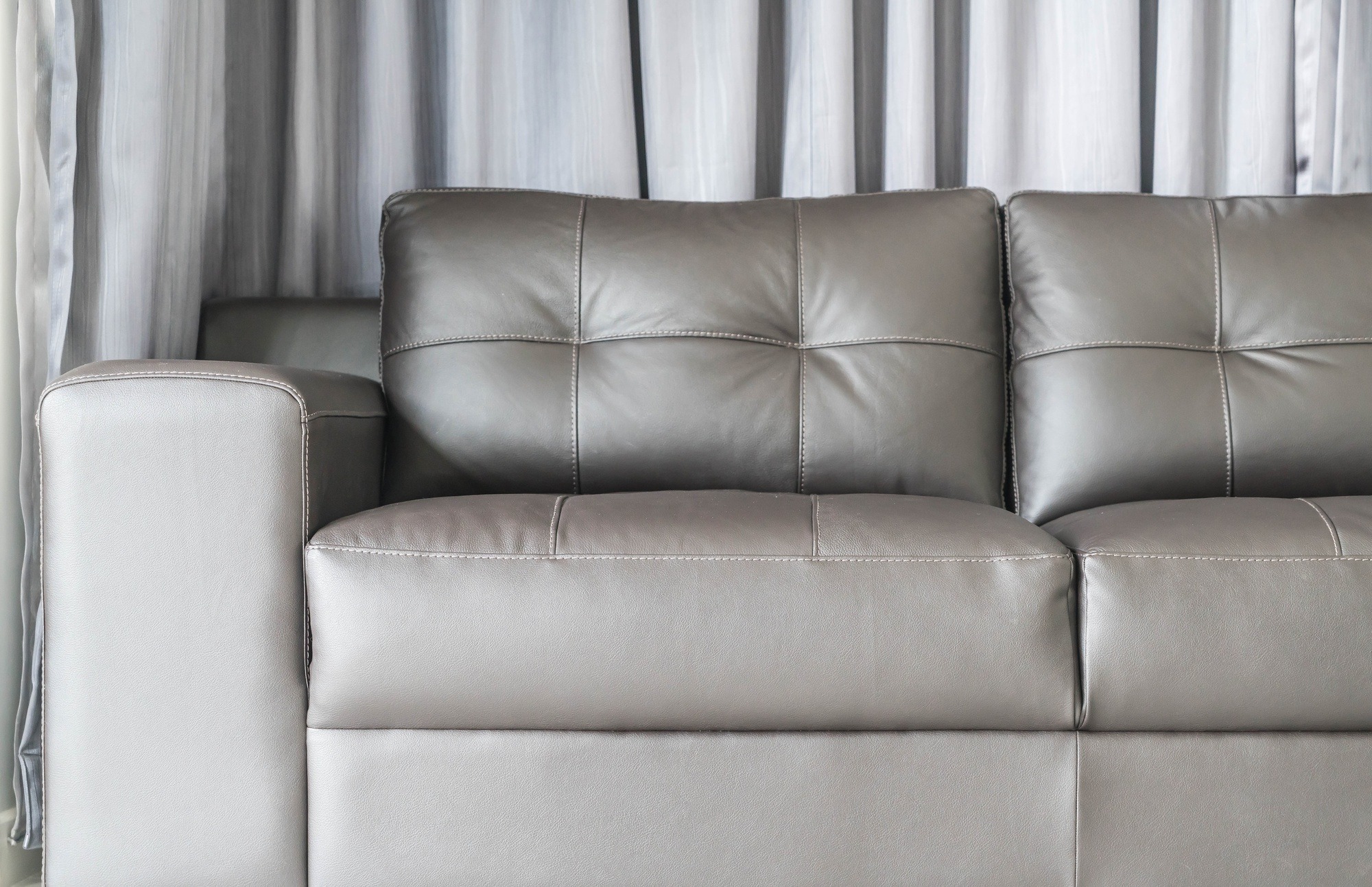How to Paint Kitchen Cabinets Like a Pro In 9 Easy Steps
Transforming your kitchen doesn’t have to mean a full remodel. One of the most impactful changes you can make is repainting your kitchen cabinets. Not only is it cost-effective, but it’s also a project you can do yourself with a bit of guidance and the right tools. Follow these nine steps to give your kitchen a professional-grade makeover without the professional cost.
1. Plan Your Project
Before diving into your project, it’s crucial to have a plan. Decide on the color and type of paint you want to use. Consider using a semi-gloss or gloss finish as they are easier to clean and more durable in the kitchen environment. Also, set aside a specific time frame for your project, keeping in mind that it will likely take several days to complete.
2. Prepare Your Workspace
Safety and cleanliness are key. Remove all the items from your cabinets and cover your countertops, appliances, and floors with drop cloths or plastic sheeting. Ensure good ventilation by opening windows or using fans to circulate the air.
3. Remove Doors and Hardware
Carefully remove the cabinet doors and drawers from the cabinet frame. Label each door and drawer (and their corresponding locations) with painter’s tape to make reassembly easier. Remove all hardware, such as knobs and hinges, and clean them if you plan on reusing them.
4. Clean All Surfaces
Kitchen cabinets accumulate grease, dirt, and food splatters over time. Use a degreasing cleaner to thoroughly wipe down all surfaces you plan to paint, including the doors, drawers, and cabinet frames. This step is crucial for ensuring the paint adheres properly.
5. Sand the Surfaces
Once clean, sand all the surfaces with a medium-grit sandpaper to create a smooth base for painting. Sanding also helps remove any old paint or finish, ensuring a more uniform application. Wipe down the surfaces with a damp cloth to remove dust after sanding.
6. Apply Primer
Primer is essential for achieving a professional-looking finish. It helps the paint adhere better and provides a uniform base. For kitchen cabinets, use a stain-blocking primer to prevent any existing stains from seeping through the paint. Allow the primer to dry completely according to the manufacturer’s instructions.
7. Paint the Cabinets
Now comes the fun part—painting! Use a high-quality brush or roller designed for the type of paint you’re using. Apply paint in thin, even coats, starting with the back of the doors and drawers. Wait for the first coat to dry completely before lightly sanding with a fine-grit sandpaper and applying a second coat. This process might seem tedious, but patience pays off in the long run.
8. Reassemble the Cabinets
Once the paint has fully cured—a process that can take a few days—reattach the hardware, doors, and drawers. Be gentle to avoid scratching the new paint job. This is also an excellent opportunity to replace old hardware for a completely refreshed look.
9. Admire Your Handiwork
Step back and enjoy the fruits of your labor. With some patience and effort, you’ve given your kitchen a stunning makeover that rivals professional jobs, all while saving money and adding a personal touch to your home.

How Much Does It Cost to Paint Kitchen Cabinets?
The cost to paint kitchen cabinets can vary widely based on several factors, including the size of your kitchen, the type of paint and materials used, whether you’re doing the work yourself or hiring professionals, and the complexity of the project. Here’s a breakdown to give you an idea of what to expect in terms of costs:
DIY Costs
If you decide to tackle the project yourself, your primary expenses will be for materials and tools. Here’s a rough estimate:
- Paint: Depending on the quality and type, you can expect to spend between $30 and $60 per gallon. Kitchens typically require two to three gallons.
- Primer: A gallon of quality primer will be around $20 to $30.
- Supplies: This includes sandpaper, painter’s tape, brushes, rollers, and trays. Expect to spend between $50 and $100, depending on what you already have.
- Additional Materials: If you need to buy or rent a paint sprayer, this can add $50 to $100 to your total cost, depending on the rental duration and model.
For a DIY project, you might spend between $200 and $400 in total on materials.
Professional Costs
Hiring professionals to paint your kitchen cabinets can significantly increase the cost, but it also ensures a high-quality finish and saves you time and effort. Professional painting services can vary widely, but here’s a general guide:
- Per Linear Foot: Some professionals charge by the linear foot of cabinetry, which can range from $30 to $60 per foot.
- Per Cabinet: Others may charge per cabinet door, drawer, or cabinet box, with prices ranging from $50 to $100 per component.
- Flat Rate: For the entire project, professionals might quote a flat rate based on the scope and complexity. Prices can range from $1,000 to $5,000 or more for an average-sized kitchen.
Keep in mind that these costs can be influenced by your geographic location, the current demand for professional painters, and any specific challenges your kitchen may present, such as intricate cabinet designs or the need for significant surface preparation.
Factors That Influence Cost
- Size of the Kitchen: Larger kitchens with more cabinets will cost more to paint than smaller ones.
- Condition of Cabinets: Cabinets that require extensive prep work, such as repairing damage or removing old paint, will increase the cost.
- Type of Paint: High-quality or specialized paints can be more expensive but offer better durability and finish.
- Hardware Replacement: If you decide to replace handles, knobs, or hinges, this will add to the overall cost.
Whether you decide to DIY or hire professionals, painting your kitchen cabinets is a cost-effective way to refresh your space. By carefully considering your options and budget, you can achieve a stunning transformation that enhances your kitchen’s appeal and value.

Types of Paint for Kitchen Cabinets
Choosing the right type of paint is crucial for your kitchen cabinets, not just for aesthetics but also for durability and ease of maintenance. Here’s a breakdown of the types of paint most suitable for kitchen cabinets, each with its unique advantages:
Oil-Based Paint
Pros:
- Durability: Oil-based paints are known for their toughness and resistance to staining, making them a good choice for kitchen cabinets.
- Smooth Finish: They tend to leave a very smooth finish, which is ideal for cabinets.
Cons:
- Longer Drying Times: Oil-based paints take longer to dry, which can extend the duration of your project.
- Cleanup: Requires solvents like mineral spirits or turpentine for cleanup.
- Fumes: They emit strong odors and VOCs (Volatile Organic Compounds), necessitating good ventilation.
Water-Based Paint (Acrylic or Latex)
Pros:
- Quick Drying: These paints dry much faster than oil-based options, speeding up the project.
- Easy Cleanup: Cleanup can be done with just soap and water.
- Eco-Friendly: They emit lower levels of VOCs, making them a more environmentally friendly choice.
- Color Retention: Water-based paints are less likely to yellow over time, especially in sunny environments.
Cons:
- Durability: While advancements have been made, traditional water-based paints might not be as durable as oil-based, though the gap is closing with modern formulations.
Alkyd Paint
Pros:
- Best of Both Worlds: Alkyd paints are essentially water-based but have been modified to perform more like oil-based paints, offering durability and ease of use.
- Low VOCs: They emit fewer fumes than traditional oil paints.
- Durable Finish: Provides a hard, durable surface that’s perfect for kitchen cabinets.
Cons:
- Cost: May be more expensive than other types of paint.
- Availability: Not as widely available as traditional oil or latex paints.
Specialty Cabinet Paints
Pros:
- Formulated for Cabinets: These paints are specifically designed for painting cabinets, with qualities that include durability, leveling (minimizing brush marks), and a smooth finish.
- Variety of Finishes: Available in a range of finishes to suit different aesthetic preferences.
Cons:
- Cost: Can be more expensive due to their specialized formulation.
- Limited Color Options: May have a more limited color palette compared to general-purpose paints.
Chalk Paint
Pros:
- No Prep Work: Chalk paint adheres well to most surfaces without the need for sanding or priming.
- Distressed Look: Ideal for achieving a vintage or distressed finish.
Cons:
- Durability: Requires a wax or sealant top coat, which may need to be reapplied over time.
- Finish: Provides a matte finish, which may not be desirable for all kitchen styles.
Milk Paint
Pros:
- Eco-Friendly: Made from natural ingredients, making it an environmentally friendly option.
- Unique Finish: Offers a distinctive, matte finish that can be used for a vintage look.
Cons:
- Finish Variability: The final finish can be somewhat unpredictable.
- Protection Required: Requires a sealant for durability and water resistance.
When choosing paint for your kitchen cabinets, consider factors such as durability, finish, drying time, and the overall look you want to achieve. Don’t hesitate to consult with professionals at your local paint store to find the best option for your specific project needs.
Before You Begin
Embarking on a kitchen cabinet painting project can transform your space, but before diving in, careful preparation is crucial for achieving professional-quality results. Here’s what you need to consider and organize before you begin:
Assess Your Cabinets’ Condition
Examine your cabinets closely to determine their condition. Look for signs of damage, such as warping, water damage, or deep scratches. Assess whether repairs are necessary before painting. Cabinets in poor condition may require more extensive prep work or, in some cases, might be better replaced than painted.
Choose the Right Time
Selecting the appropriate time for your project is key. Consider undertaking this task during milder weather to ensure good ventilation and faster drying times. Also, choose a period when you can afford to have your kitchen out of commission for several days, as the project can be quite disruptive.
Plan Your Budget
While painting kitchen cabinets is cost-effective compared to replacing them, there are still costs involved. Budget for paint, primer, brushes, rollers, sandpaper, and other supplies. If you’re considering upgrading your hardware (knobs, pulls, hinges), include this in your budget as well.
Select Your Paint and Finish
Decide on the type of paint and finish that best suits your needs. Research the durability, drying times, and application methods of different paints. Semi-gloss or gloss finishes are popular for kitchens due to their ease of cleaning and resistance to moisture.
Gather Your Tools and Materials
Having all your tools and materials ready before you start will make the process smoother. Essential supplies include:
- Quality paint and primer
- Sandpaper (various grits)
- Paintbrushes and rollers (or a paint sprayer)
- Painter’s tape
- Drop cloths or plastic sheeting
- Screwdriver (for hardware removal)
- Cleaning supplies (degreaser, rags)
Set Up a Temporary Kitchen
Since your kitchen will be out of service, set up a temporary space where you can prepare meals. This might include moving a microwave, toaster, or small refrigerator to another room. Plan for simple meals that don’t require extensive cooking.
Inform Your Household
Make sure everyone in your home is aware of the project timeline and understands the kitchen will be temporarily unavailable. This helps manage expectations and reduces the stress of living in a home undergoing renovations.
Prepare for Safety
Ensure you have the necessary safety equipment, including gloves, goggles, and masks, especially if you’re using solvent-based paints or undertaking significant sanding.
Do a Final Check
Review your plan, materials, and schedule to ensure everything is in order. Double-check the weather forecast if ventilation will rely on open windows, and confirm you have enough paint and supplies to avoid mid-project runs to the store.
By meticulously preparing for your kitchen cabinet painting project, you set the stage for a smoother process and outstanding results. Taking the time to plan and prepare will save you time, money, and headaches, turning your kitchen transformation dream into a reality.
Safety Considerations
When undertaking a project like painting kitchen cabinets, prioritizing safety is essential. While it might seem like a straightforward task, there are several safety considerations to keep in mind to ensure the project is completed without any mishaps. Here’s a comprehensive guide to staying safe while giving your kitchen a makeover:
Work in a Well-Ventilated Area
Paints and primers, especially oil-based varieties, release fumes that can be harmful if inhaled in enclosed spaces. Ensure your workspace is well-ventilated by opening windows, using fans to circulate air, and working with doors open if possible. If ventilation is still inadequate, consider wearing a respirator or mask designed to filter out paint fumes.
Wear Protective Gear
Skin and eye protection are crucial when painting. Wear gloves to protect your hands from paint and solvents, and consider long sleeves to avoid skin irritation. Safety goggles are a must to protect your eyes from splashes, especially when sanding or painting ceilings and overhead areas.
Avoid Fire Hazards
Paints, primers, and solvents can be flammable, so it’s important to keep them away from open flames, sparks, and heated surfaces. Store rags soaked with solvents in a metal container with a lid to prevent spontaneous combustion. Always read and follow the safety instructions on product labels.
Use Ladders Safely
If your cabinet painting project requires you to work at height, make sure to use a stable ladder. Position it securely on a flat surface, and never overreach while on a ladder—move it as needed to safely access your work area. For higher cabinets, consider scaffolding, which provides a more stable platform than a ladder.
Manage Dust and Debris
Sanding cabinets can produce a significant amount of dust, which can be harmful if inhaled. Wear a dust mask or respirator to protect your lungs, and use sanders equipped with dust collection systems if possible. Clean up dust and debris regularly to prevent slips and falls.
Properly Dispose of Paint and Solvents
Disposing of paint, primer, and solvents requires special care to avoid environmental harm and comply with local regulations. Never pour these materials down the drain or into the ground. Check with your local waste management facility for guidance on disposing of hazardous materials.
Keep Children and Pets Away
The work area can be dangerous for children and pets, not just because of the risk of exposure to paint and chemicals, but also due to tools, ladders, and debris. Keep them out of the workspace until the project is complete and the area is cleaned up.
Take Breaks and Stay Hydrated
Painting can be physically demanding, so it’s important to take regular breaks, especially when working in a warm or poorly ventilated space. Stay hydrated and listen to your body to avoid overexertion.
By following these safety considerations, you can ensure your kitchen cabinet painting project is not only successful but also safe from start to finish. Safety should always be your top priority, ensuring that your DIY project enhances your home without risking your health or well-being.
Additional Tips for a Flawless Finish
Choose the Right Paint
Selecting the correct type of paint is crucial for kitchen cabinets. Oil-based paints have long been the standard for their durability and smooth finish, but modern water-based formulas, known as “100% acrylic enamels” or “alkyd” paints, offer similar benefits without the fumes and lengthy drying times. Consider your options carefully and don’t hesitate to consult with professionals at your local paint store.
Invest in Quality Tools
The tools you use can make a significant difference in the finish of your cabinets. High-quality brushes and rollers can help prevent brush marks and ensure a smoother application. For an even more professional finish, consider using a paint sprayer, which can provide a superior smoothness that brushes and rollers struggle to achieve.
Test Your Paint
Before committing to painting all your cabinets, test the paint on a small area or on a spare piece of wood. This allows you to see the color and finish in your kitchen’s lighting and make any necessary adjustments before proceeding with the entire project.
Use Painter’s Tape for Clean Edges
Apply painter’s tape to any areas you want to protect from paint, such as the wall or the interior edges of the cabinet frame. Be sure to press down the edges of the tape firmly to prevent paint from bleeding underneath.
Remove Paint Drips Immediately
If you notice any drips or uneven application, address them immediately while the paint is still wet. Use a damp cloth or a fine brush to gently remove or even out the excess paint.
Allow Ample Drying Time
One of the most common mistakes in cabinet painting is rushing the drying process. Each coat of primer and paint needs to dry thoroughly before applying the next layer. Rushing this process can lead to a finish that isn’t durable or smooth.
Consider Adding a Protective Topcoat
For extra durability, especially in high-traffic kitchens, consider applying a water-based polyurethane topcoat over the final paint layer. This can protect your cabinets from scratches, stains, and wear over time.
Regular Maintenance
Once your cabinets are beautifully painted and reassembled, keeping them clean will help maintain their appearance for years to come. Wipe spills and splatters promptly with a soft, damp cloth and avoid using harsh chemical cleaners that can damage the paint.
Update Your Hardware
Replacing old or outdated hardware can further transform your kitchen’s look. Consider the style and finish of knobs, pulls, and hinges that complement your new cabinet color and overall kitchen decor.


